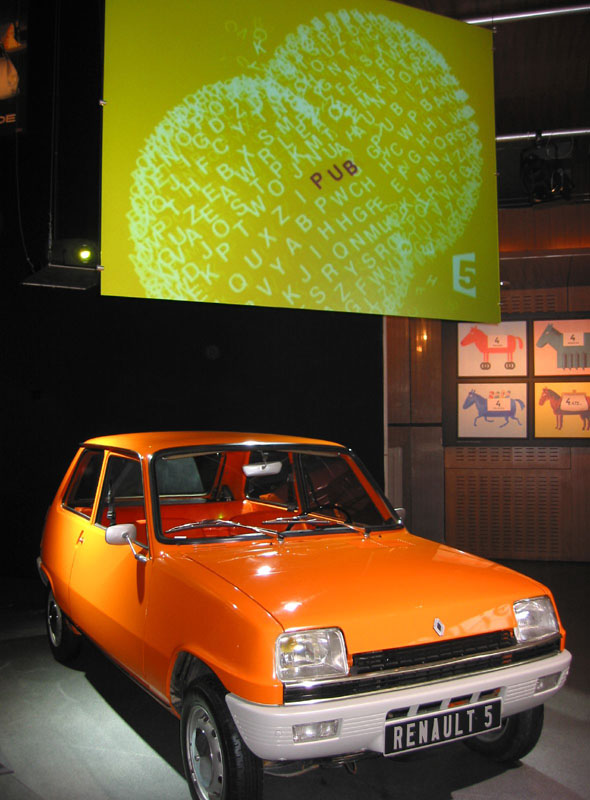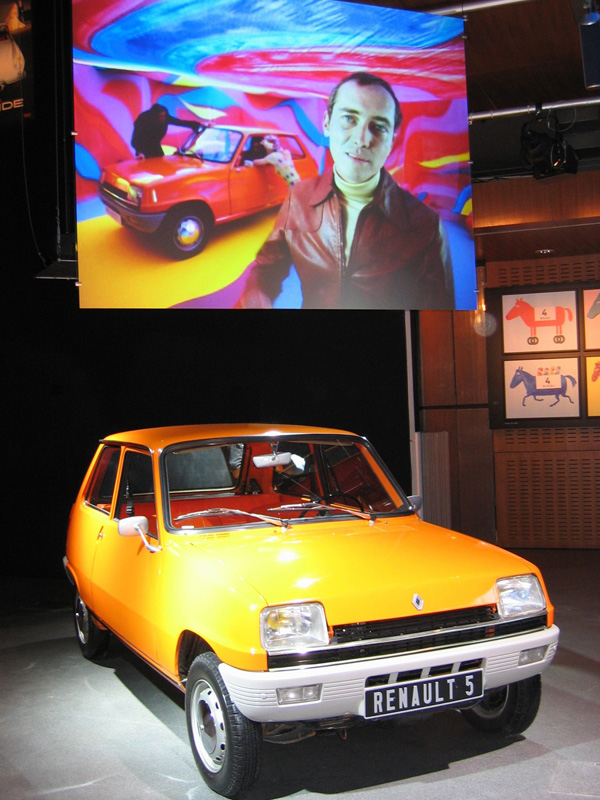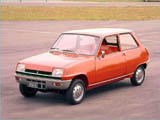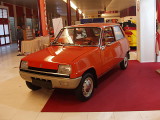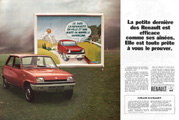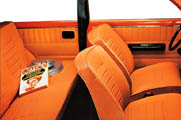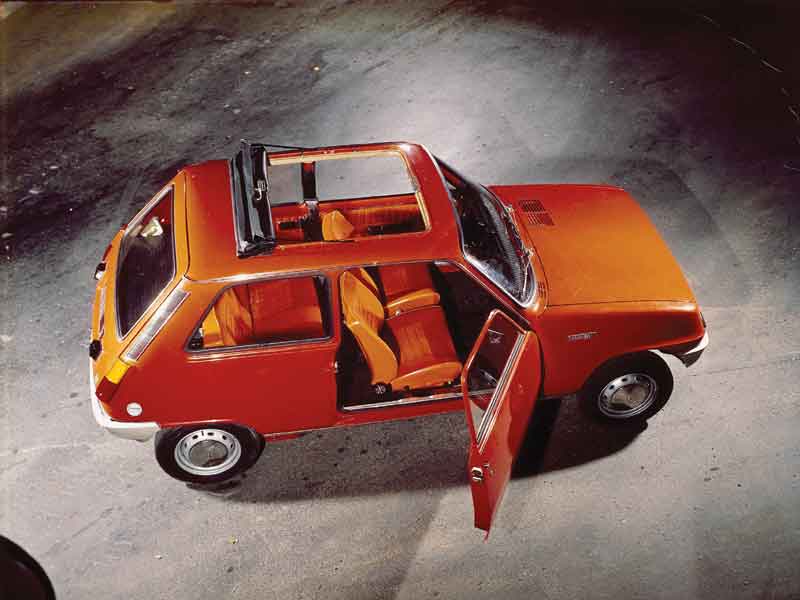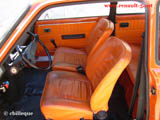The Renault 5 had its international presentation in January 1972 and changed the way we look to a
car, making it at once popular, attractive and accessible.
Its design allowed it to be simultaneously not only a city car, quick and easy to drive, but also comfortable and economic on road and long trips.
This certainly resulted from the growing need the market had been showing for a car with a higher "status" and presence
than the Mini, more refined than the Renault 4 and more sophisticated than the Citröen Dyane. With it, Renault sought
to compete in the sector of small individual cars and reach new customers: young single people, women, as well as a wide
range of several other social and professional classes.
The Renault 5, with only 3.53 m, was a "compact" with a performance and comfort too close to the middle segment cars.
Having also a bonus of a rear gate (facilitating access to a boot whose capacity could vary between 215 to 545 dm3 with
the rear seat folded down), won a place that many would consider to belong to a class immediately above.
In short, the terms of reference for the Renault 5 could perfectly be summarized as "a vehicle capable of
carrying no matter what, no matter who, no matter where, as quickly and safely as possible."
For Renault, security was a main issue that should prevail above all other characteristics. That meant that a
small vehicle like this should have good road performance, comfortable suspension to avoid fatigue and
be agile enough to overcome critical driving situations. This also implied a good shock resistance, for what it
benefited from all studies in the field of passive safety Renault had made to date and that resulted in a central
structure designed to keep the cabin intact in the event of a crash.
The Renault 5 was also a car at the forefront of technical innovation in its time, with some innovative solutions such
as the reinforced wraparound plastic bumpers built into the body (instead of the convencional chrome bumpers)
and able to absorb impacts of up to 7 km / h without significant damage.
With a monocoque structure mainly
made of welded panels, ensuring a considerable structural rigidity, the Renault 5 was very different from
the previous solution presented by Renault on its 4 and 6 models where a platform type chassis, bolted
to the body, was used.
In this structure, the thickness of the main exterior steel panels was about 0.7 mm while the elements
responsible for its rigidity and support used 1 mm thick steel. However, at the time of its launch some
solutions inherited from previous models were used, which were subsequently corrected and modernized, like
the "umbrella" type dashboard-mounted gearshift or the longitudinally-mounted engine driving the front
wheels with torsion bar suspension.
The launch in France was based on two models:
- The R5 L (782 cm3 e 36 HP engine inherited from the R4)
This model had a classic engine that used a three main bearing
crankshaft, belt
driven cooling fan, and electrical system with dynamo. The brake system was
hydraulic with drums on all four wheels.
- The R5 TL (956 cm3 e 47 HP engine inherited from the R8)
This model's engine was already using a 5 main bearing crankshaft, an electrical
system with alternator and an electric cooling fan with thermostat. The brake system
of this model already used discs on the front axle.
Both models used a 32 SE-1 SOLEX carburettor with manual choke a 4 speed synchronized gearbox.
 Português
Português